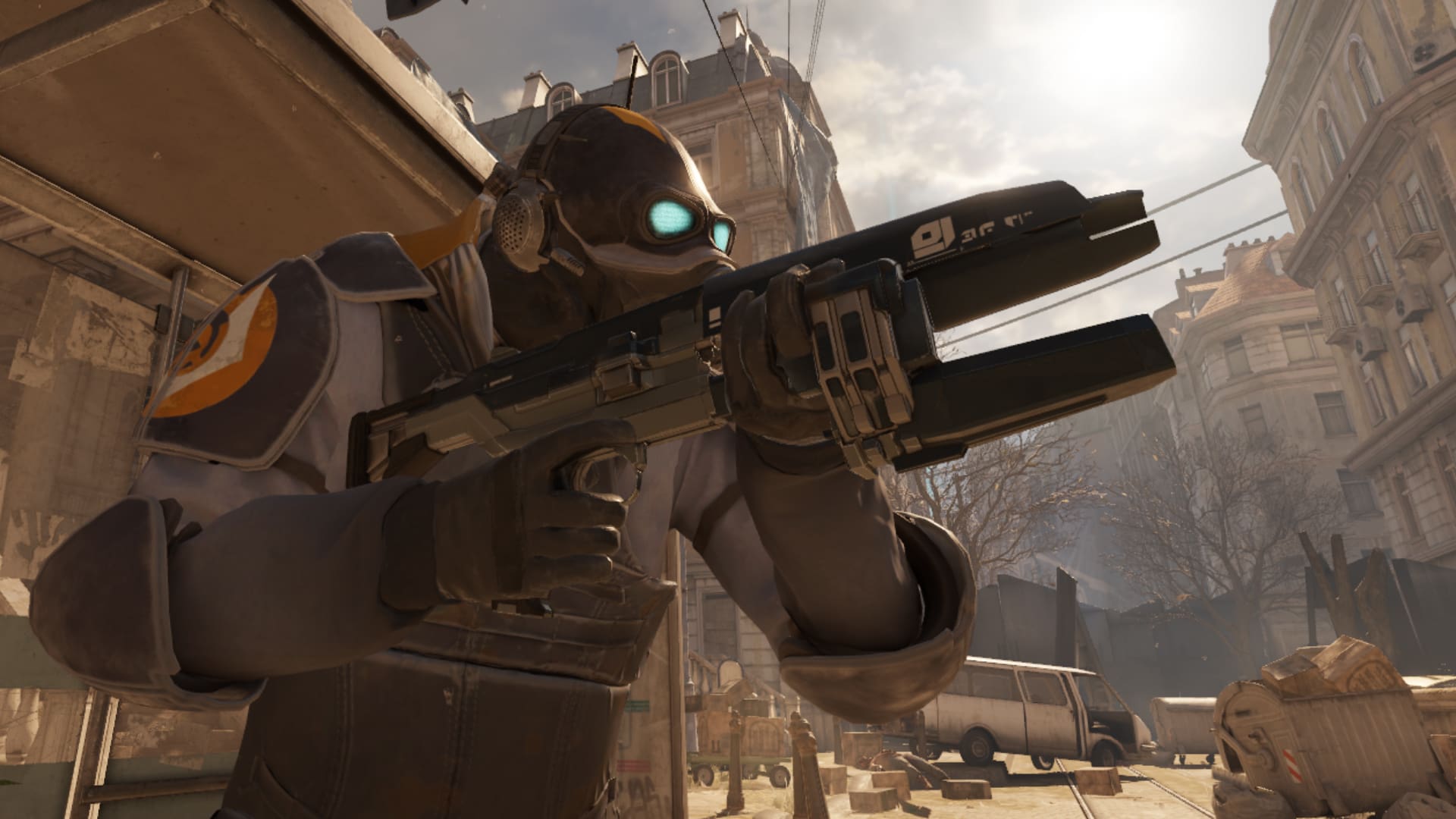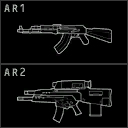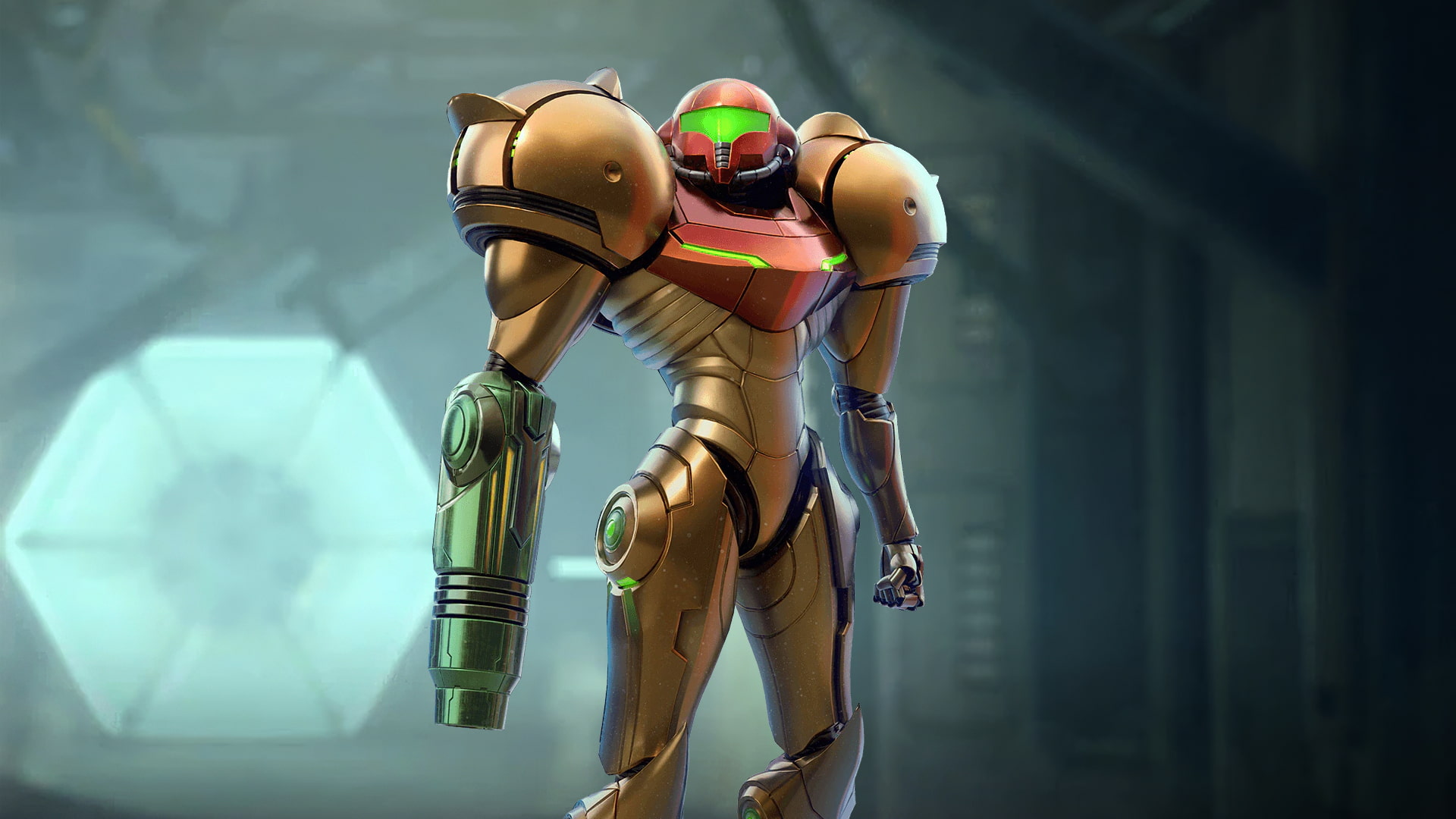One of the most iconic and recognizable weapons in Half-Life 2’s arsenal, the Combine Overwatch pulse rifle has plenty of interesting details about it, from its unorthodox origin to the source of its unique secondary fire.
In this article, we’ll go over its history, from conception to its final iteration, as well as its traits and why it’s such an enduring part of Half-Life.
Appearance and characteristics
The Overwatch Standard Issue Pulse Rifle (OSIPR), also colloquially known as the AR2—a term used only once in-game in the Half-Life 2 series, in one of Episode Two’s best-known jokes—and sometimes as the “iRifle” from its model name, is, as the name implies, the Combine’s standard assault rifle for Overwatch troops.
The pulse rifle fires Dark Energy pulses (up to 30 per reload), the same energy that powers Combine equipment and facilities such as the Citadel. As a secondary fire, it can also launch Dark Energy orbs like the ones the Combine uses as power sources, which completely disintegrate any small- to medium-sized enemy that it touches, from headcrabs up to Combine Hunters—being particularly useful against the latter, leading to a memorable scene in Half-Life 2: Episode Two where a rebel explains how to use it against Hunters to a refugee who insists he’s used a non-existent “AR3” plenty of times—, and can also damage larger enemies, such as Gunships and Striders, albeit to a lesser degree than a rocket-propelled grenade. The player can only carry up to 90 pulses of ammunition, essentially three magazines, and up to 3 energy orbs; coupled with the weapon’s fast firing rate, this means that a player can run out of ammunition in a matter of seconds if they don’t use it sparingly.
In terms of appearance, the pulse rifle appears to be built from the same metallic blue material used by the Combine in a variety of applications, such as their structures and devices, from the city scanners to their terminals. Its most notable feature is the large magazine that wraps around the barrel, giving it its distinctive silhouette. It has two barrels, the top one firing the standard pulses and the bottom one serving as the launcher for the energy orbs. The alphanumeric designation “V952” can be prominently seen on the pulse rifle’s barrel in its first-person model (viewmodel), a combination also seen in certain Combine equipment such as the Hunter-Chopper and the turret and which is actually an Easter egg referencing the model artist Tri Nguyen’s brother, as it is his police officer badge number.
The pulse rifle is notable for an inconsistency in the method of reloading when comparing the player and the non-player characters. Non-player characters can be observed gesturing towards a pouch or pocket on their back and moving their hands into the pulse rifle as if replacing its magazine (although the magazine itself is untouched throughout the animation), then pulling back on the firing pin. When reloaded by the player, however, the pulse rifle itself automatically removes the spent energy cartridge and replaces it with a fresh one, without the player’s hands ever noticeably replacing the magazine (despite the fact that the player picks up said magazines to reload the pulse rifle).
This inconsistency is noticeable enough that some mods, such as Half-Life 2: MMod, replace the animations of one of the two sides in order to make reloading the pulse rifle more coherent overall—MMod, for instance, has the gun expel its spent cartridge when it runs out, then the player removes the magazine altogether and replaces it with a fresh one, while keeping the touch of the rifle automatically reinserting an energy cartridge at the end.
As it turns out, the difference in reloads is symptomatic of how the pulse rifle came to be in the first place, with both reloading methods each being derived from a different origin: the NPCs’ from the original AR2 and the players’ from the original use of the final pulse rifle model.
Development history
The story behind the creation of the pulse rifle is fairly convoluted and deeply tied into Half-Life 2’s own constantly shifting and evolving state throughout its development.
At a certain early point in development, the plan for Half-Life 2 was to have a constantly rotating set of weapons; much like in chapter Apprehension of the original Half-Life, Gordon Freeman would be stripped of his arsenal due to story reasons, such as being captured or to board a submarine and go to the bottom of the ocean. As such, previous weapon types, such as submachine guns and rifles, would get replaced by another weapon that filled the same general role.
From leftover files in the final Half-Life 2 as well as pre-release material and the Half-Life 2 beta theft, we know of at least two assault rifle predecessors to the pulse rifle, codenamed AR1 and AR2 (“AR” being shorthand for “Assault Rifle”, hence “Assault Rifle 1” and “Assault Rifle 2”). The AR1 would have been an AK-47, a standard assault rifle in videogames popularized by Counter-Strike, whereas the AR2 was planned to be an XM29 Objective Individual Combat Weapon (OICW), an early-2000’s prototype assault rifle model for the United States Army project of the same name to develop a next-generation rifle. The OICW was to be the Combine infantry’s standard rifle and was prevalent in pre-release screenshots and footage.
At the same time, Valve was toying with a rifle version of the flare gun (another cut weapon) that allowed the player to shoot multiple flares before reloading. Dubbed the Incendiary Rifle (“irifle” in the code and game files, still present in the pulse rifle’s model filename), this weapon would allow players to shoot up to 5 flares before reloading, instantly setting targets on fire upon hit. Besides the Half-Life 2 leak, the Incendiary Rifle made a single appearance in pre-release footage, being used in the E3 2003 demonstration “Tunnels”.
Ultimately, as the idea for an ever-changing weapon set was dropped, the arsenal itself was toned down considerably. Both the AR1 and the original AR2 were cut as well as the Incendiary Rifle, with the latter’s model being repurposed with alterations to serve as the new Combine assault rifle, keeping the name “AR2” internally. This also helps to explain the awkward difference in reloading the pulse rifle between player and NPCs—the weapon’s viewmodel (i.e. the weapon used by the player from their point of view) uses the Incendiary Rifle’s original flare-switching animation for its reloads, whereas the NPCs reuse the reload animation for the original OICW AR2.
One of the most visually iconic weapons from Half-Life 2 was, therefore, basically an amalgamation of otherwise scrapped content: leftover code for the AR2 and the model of an otherwise unrelated weapon. As luck would have it, the result, much like Half-Life 2 itself, was more than the sum of its parts. Even its secondary feature was, in part, recycled content.
The origin of the pulse rifle’s alternate fire
As mentioned earlier, one of the pulse rifle’s most notable features is its secondary fire, which shoots a dark energy orb that instantly disintegrates any human-sized or smaller enemy, as well as damaging bigger enemies, including Striders. Surprisingly, this feature wasn’t actually planned for the weapon at the start, but was added later in development.
As revealed in Game Developer’s Half-Life 2 post-mortem, as part of Valve’s “cabal” process, the energy orbs were originally designed for the Citadel levels and eventually reused as the pulse rifle’s alternate fire mode:
For example, the Ravenholm cabal enabled the gravity gun to interact in specialized ways with particular objects (such as the sawblades). This inspired the Citadel cabal to make the super gravity gun. The energy balls resulting from that work were later used by the Follow Freeman cabal to open the Nexus gates. Later still, they were incorporated into the alternate-fire for the Combine assault rifle.
Subsequent appearances

An earlier version of the pulse rifle with some cosmetic differences is seen being used by Combine Ordinals in Half-Life: Alyx, set five years prior to the events of Half-Life 2. Alyx Vance is unable to pick one up due to Combine weaponry being “gene-encoded”, meaning she would need to have her DNA altered in order to use it. A similar but more compact weapon, the Combine SMG, is introduced in this game and Alyx can actually use one that is found in a box “unbounded”, meaning it doesn’t require genetic modification for Alyx to use.
Aesthetically, the new model looks very similar to the original pulse rifle, although with much higher fidelity, but there are some notable differences. In particular, parts of the grip and the stock are in a metallic grey hue rather than the standard blue, a design element shared with the Combine SMG, and its magazine is noticeably smaller than in Half-Life 2. On its sides, an inscription in Half-Life: Alyx’s new Combine alphabet has a large “G” followed by “AR V˙˙“, with the latter presumably meaning “AR version 2”, a.k.a. AR2, implying that, despite the aesthetic differences, it’s very much the same weapon model as in the chronologically later game. What the “G” stands for is currently unknown, but it’s worth pointing out other Combine equipment in Half-Life: Alyx, such as the city scanners and the Combine SMG, bears the same icon.
Interestingly, the new model for the pulse rifle still bears the name “irifle.mdl”, possibly from being a simple replacement for the original in the files.
Whether the pulse rifle will make any subsequent appearances in future Half-Life games is as of yet unknown, but there’s a good chance this isn’t the last we’ll see of the AR2, it being a particularly striking and unique design that gives Half-Life a flavor all its own when compared to the typical assault rifles of other games. In the end, an amalgamation of disparate concepts from the development of Half-Life 2 led to the creation of an iconic and memorable weapon, both an excellent example of how Valve’s method of making games can make something that’s more than the sum of its parts and, in the end, just a damn fine gun.
References
- Hodgson, David (2004). Half-Life 2: Raising the Bar (Uncorrected proof), p. 327. Prima Games. Available at: https://valvearchive.com/archive/Half-Life/Half-Life%202/Guides/Prima/Half-Life%202%20Raising%20The%20Bar/Half-Life%202%20-%20Raising%20The%20Bar%20%28Uncorrected%20Proof%29.pdf
- Jacobson, Brian; Speyer, David (2005). Scaling the Cabal: Valve’s Design Process for Creating Half-Life 2. November. Game Developer. Available at: https://www.hl-inside.ru/magazines/gdm/GDM_2005-11/ and https://www.gamedeveloper.com/design/classic-postmortem-the-making-of-i-half-life-2-i-
- ValveTime (2017). Half-Life 2’s number V952 Easter egg explained. #halflife [Twitter]. 24 April. Available at: https://twitter.com/valvetime/status/856520341874765824



A great write-up about one of the most satisying-sounding weapons in game history!